GATTERs
OF THE RHINE-LAND
.
(Mönchen-Gladbach,
Krefeld and surroundings)
Some descendants live today in Washington State, USA
The Gatters of the Rhineland make their appearance in the first half of
the 17th century. Already then they are spread over many towns and villages
of the aea. But their common origin seems likely, since the name is rare,
and does not appear for hundreds of kilometers around this area. Since
the Gatter family of the Rhine-Land is already then quite numerous by
the 17th century, a common ancestor must have lived quite some time back
(possibly in the 13th -15th centuries).
The family name in the old church records shifts always between Gatter and Gater, while the spelling with one 't' is more abundand. In Mönchen Gladbach we also find spellings like GATHER (1638), GADER (1642), GATERAN (1661) and GATEREN (1698). In Pulheim also KATTER (1694). Today still members of this family live in this area, they are however all spelled 'Gater'.
Two distinct lines become apparent. The slightly older Catholic one with its center in Mönchen-Gladbach (appreaing first in 1637) and the Protestant one with center Krefeld, appearing there in 1647.
The Catholic branch is alreay wide spred in the 17th century (Hinsbeck (1651), Fischeln (1652), Anrath (1665), Korschenbroich (1674), Bergheim (1681), and Bochum (1698)). The Protestant branch is found besides Krefeld only in Rheydt (1679) and Jüchen (1685).
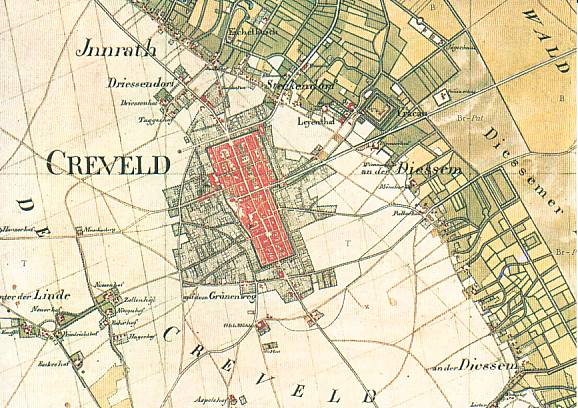 |
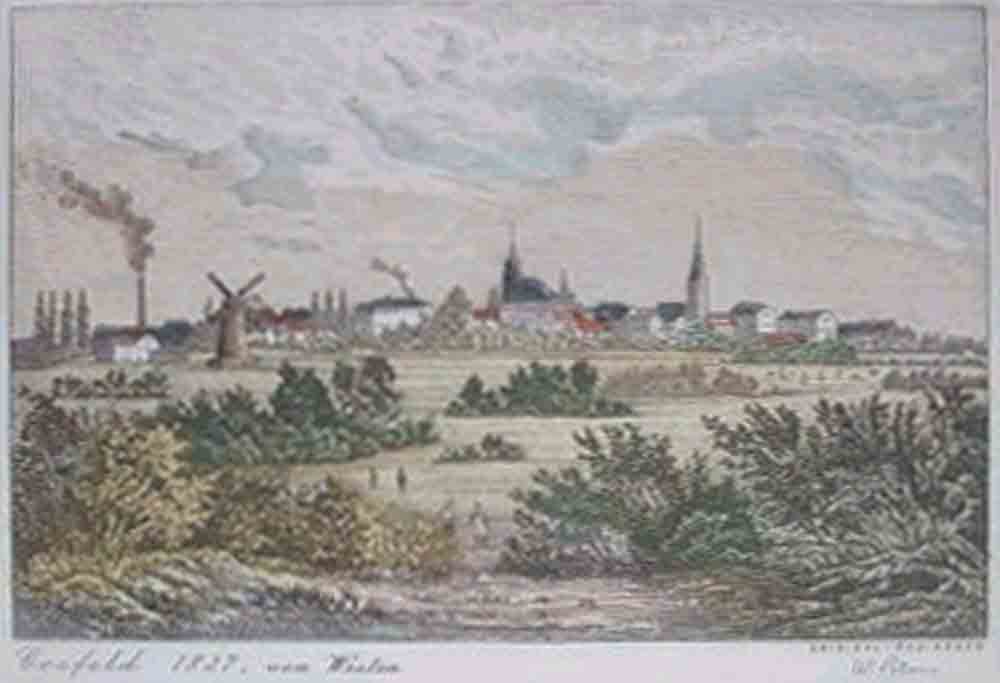 |
|
|
A map of Krefeld (here spelled Creveld) of 1807 |
Krefeld as seen in 1827 |
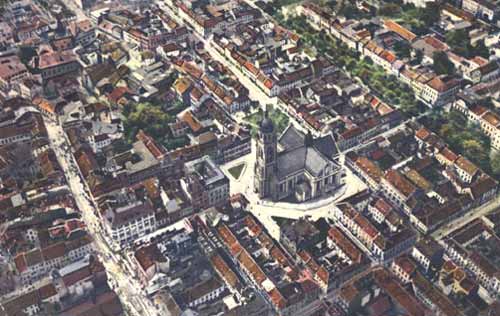 |
|
Aerial view of Krefeld as seen in 1914 from board a Zeppelin |
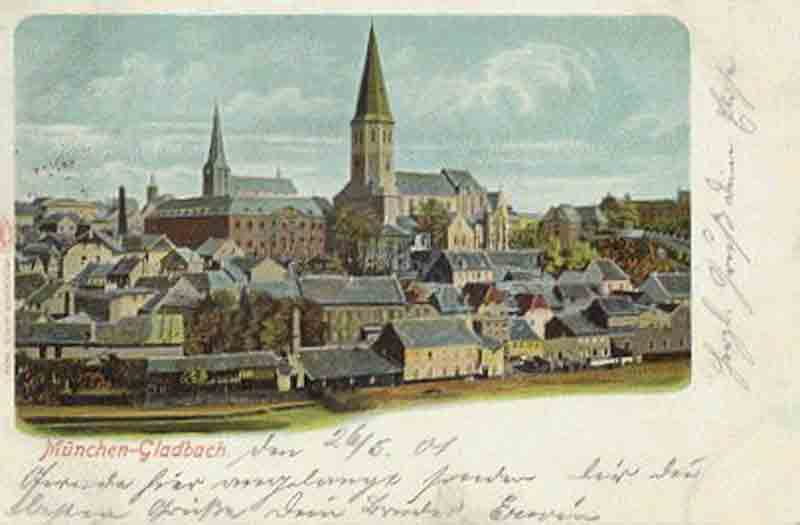 |
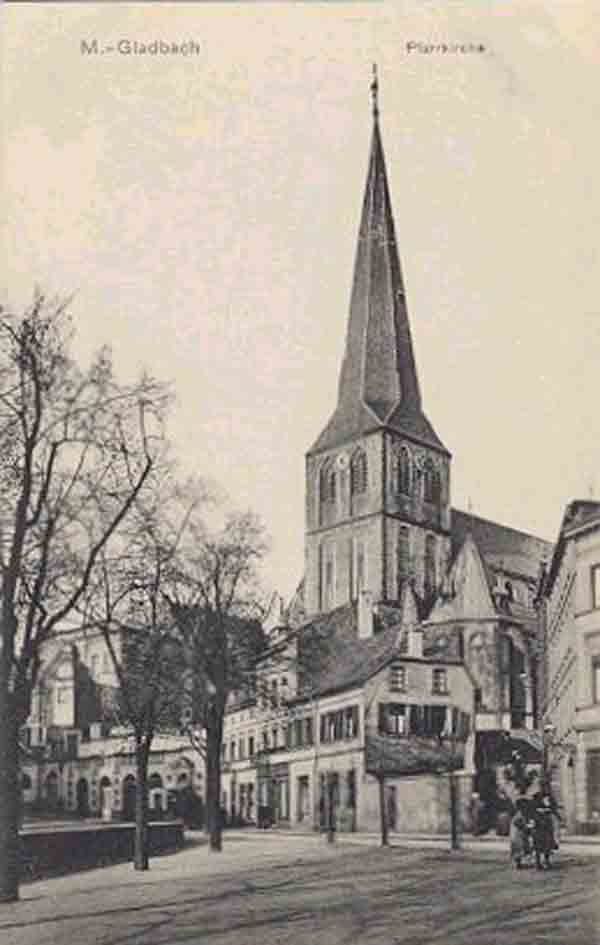 |
|
|
General view of Mönchen-Gladbach
in 1905. The town got its name "Mönchen" or "München"
from the monks that had founded an abbey here in the old days. Despite
the name being the same as the capital of Bavaria Munich (in German
also München), this si not the same town!
|
The central parish church of Mönchen-Gladbach. |
In the year 1901 members of the Rhine-Land Gatter family left their olf home for America. On October 8, 1901, Carl Gatter (age 58) and his wife Margaretha (age 57), both of Mönchen-Gladbach, arrived on bord the ship "Vaderland" at Ellis Island, New York. Having embarked at Antwerp in Belgium. They were accompanied by their son Fritz Gatter (age 28) and his wife Catharine (age 23).
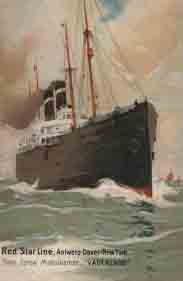 |
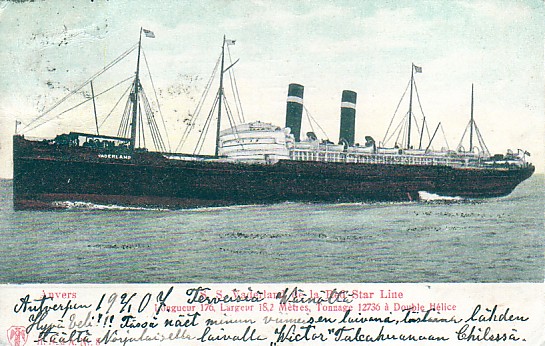 |
|
|
The Ship "Vaderland"
|
|
History of the "Vaderland" VADERLAND/SOUTHLAND was built in 1900 by John Brown & Co. at Clydebank with a tonnage of 11899grt, a length of 560ft 8in, a beam of 60ft 2in and a service speed of 15 knots. Sister of the Zeeland she was launched on 12th July 1900 for the International Navigation Co. and allocated to the Red Star Line flying the British flag. Delivered on 29th November she commenced her maiden voyage Antwerp- Southampton-Cherbourg-New York on 8th December. In 1903 she was registered at Antwerp and flew the Belgian flag. She also made frequent calls to Dover instead of Southampton. On 25th July 1914 she made her final pre-war sailing from Antwerp arriving in New York shortly before World War 1 was declared. When Belgium was overrun by the Germans in the August she was transferred to White Star Line and commenced her first sailing from New York to Southampton on 3rd September. In 1915 she was renamed Southland as the Dutch name 'Vaderland' was too similar to the German 'Vaterland'. At the same time she was transferred to the White Star-Dominion Joint Service from Liverpool to Canada and in the Spring was requisitioned as a troopship for the Dardenelles campaign. She carried troops to Mudros which was the British army's transhipment port from where the troops were taken to the beaches on warships or 'K' type landing barges. On 2nd September 1915 she was torpedoed by UB-14 whilst transporting 1,400 men of the 2nd Australian Division from Alexandria to Mudros and was assisted into port by HMS Racoon. By August she was back on the Liverpool to Montreal Joint Service route and when the Americans entered the war in April 1917 she was used for eastbound Atlantic trooping. On 4th June 1917 she was hit by two torpedoes from U-70 and sank 140 miles north-west of Tory Island with the loss of 4 lives. |
While we do not know much about Carl Gatter, who was born around 1843 in Mönchen-Gladbach, his son Fritz (Friedrich Carl?) Gatter (born 1873/1874) and wife Catharine Monsum settled in Seattle, Washington. Here Fritz (by then americanized as "Frederick") opened a small foundry on Lake Washington across the water from Ballard. The area was called Fort Lawton (an army base). Among the children of the family were Margaret, Agnes, Karoline ("Kitty"), Fredrick C., Charles Hans, and Katherine Francis Gatter. They have a numerous descendancy in the US today.
I have been in contact with several descendants of this family, and apparently very interesting old family photographs have survived, of life back in Germany, or the Seattle foundry. One picture, as I was told, shows Fritz (the one born 1873/74) with his six or seven brothers, all playing different musical instruments. It would be great to get some good quality copies of these for the book project. If you are a descendant of this family and do have such old pictures, then please be so kind and contribute them to this project.
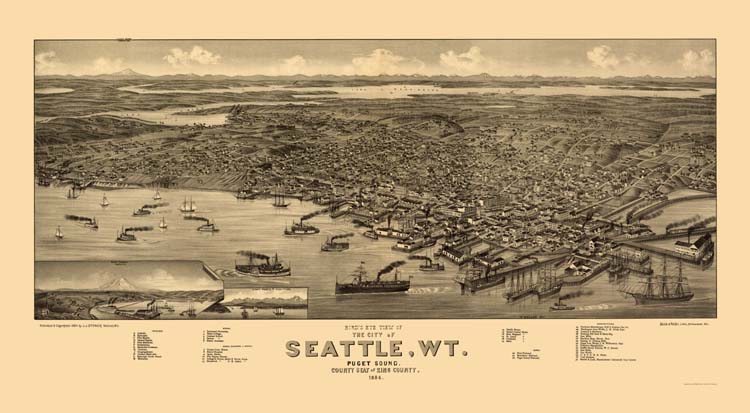 |
|
Seattle before the turn of the 20th century |
So far, no member of this family originating from the Rhine-Land has participated
in our DNA analysis. It would be interesting to compare this DNA to those
of other Gatter families, since the occurrance of this family is very
isolated from the main settling area of the Gatters (Saxony, Bohemia,
Bavaria, Austria) (see map of Gatter distribution below. The circle to
the left is the home are of the Rhine-Land Gatters). Thus, if you are
a male descendant of this line click
here to find out more about our DNA research.
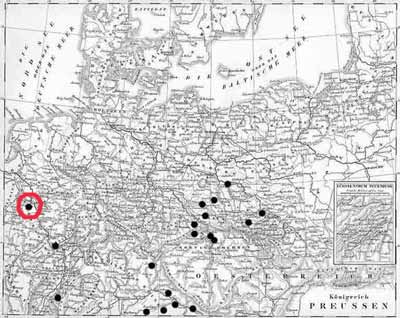 |
Map of Prussia (1851) showing the Gatter dirstribution in the 16th and 17th centuries. In red the Rhine-Land Gatters. For an enlargment or the map click here. |
Copyright:
Gatter Archive 2000-2008
Any distribution and use of material displayed on the Gatter History Archive
Web Page
other than for personal purposes will be prosecuted
Contact